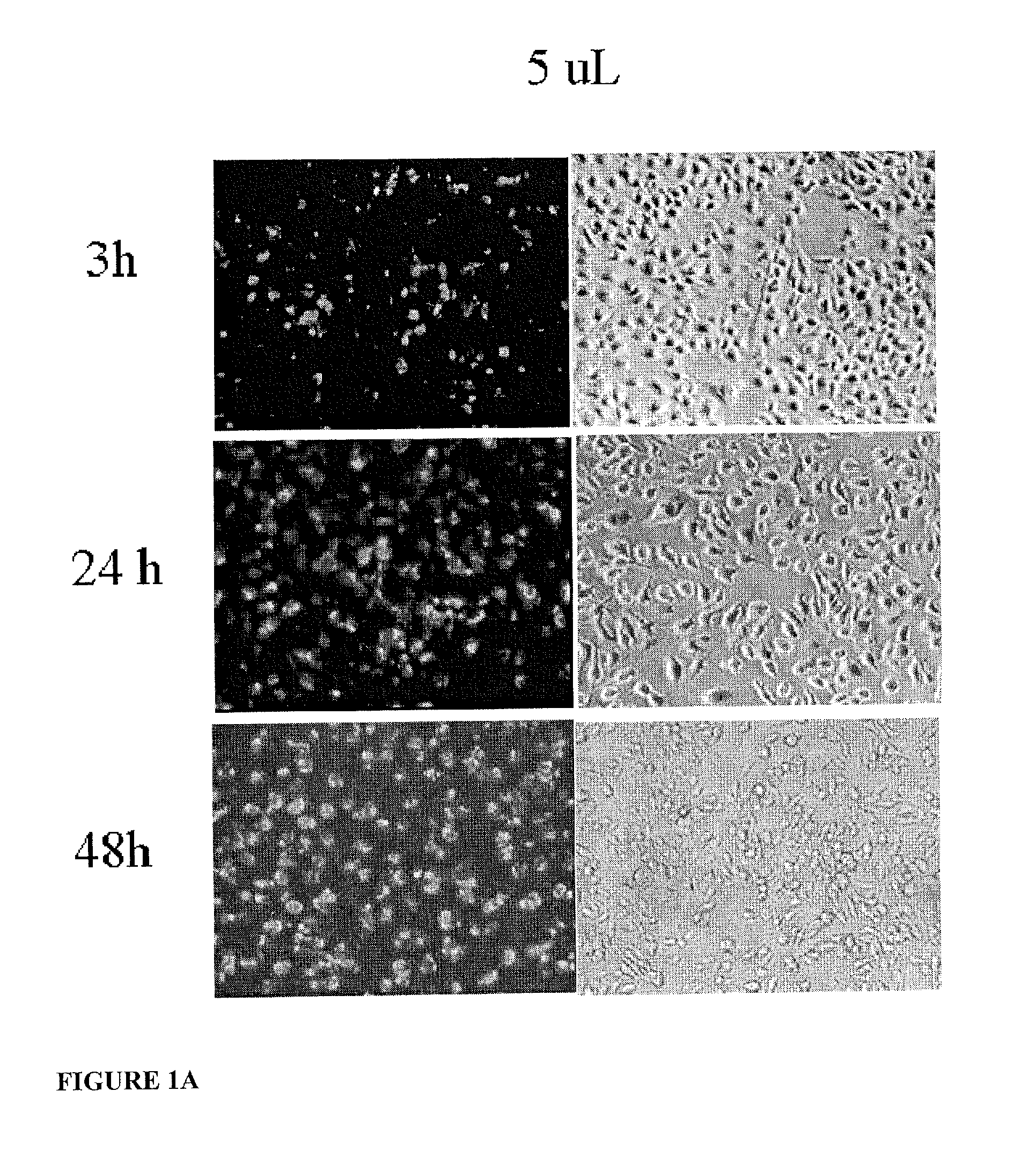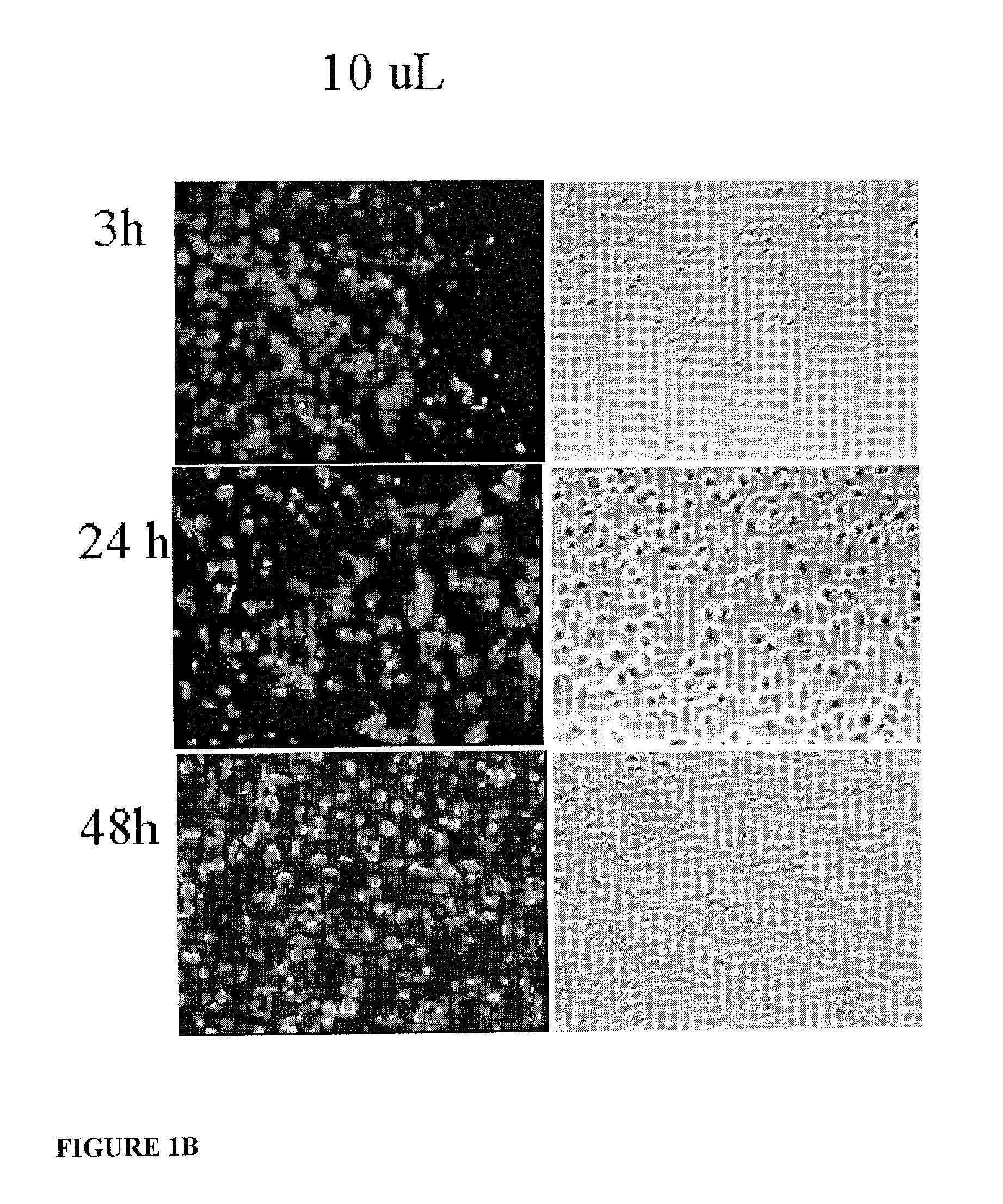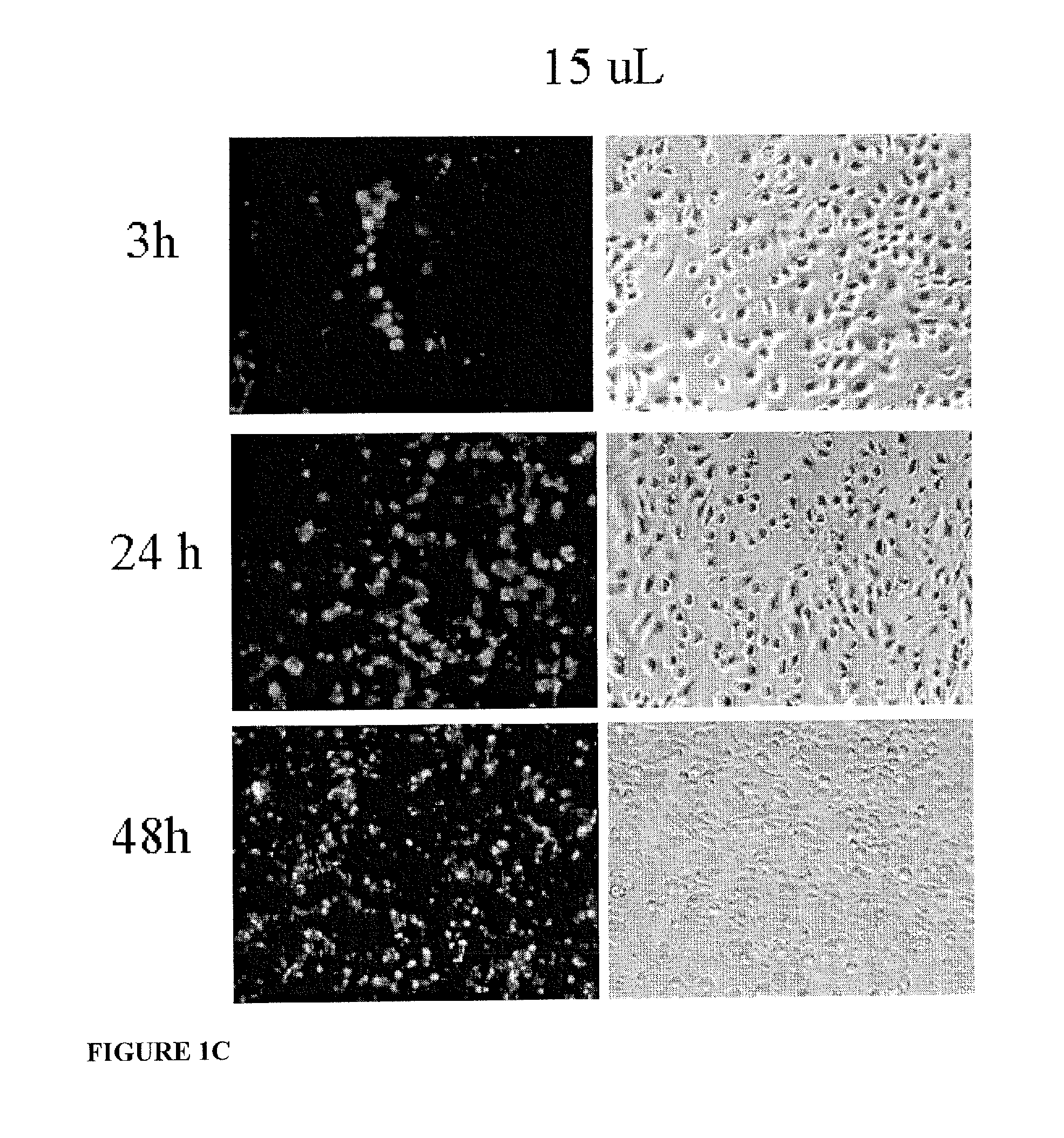System for delivering therapeutic agents into living cells and cells nuclei
- Summary
- Abstract
- Description
- Claims
- Application Information
AI Technical Summary
Benefits of technology
Problems solved by technology
Method used
Image
Examples
example 1
[0423]All starting material compounds and reagents were purchased from Aldrich.
Preparation of N-(2-cyanoethoxycarbonyloxy)succinimide (CEOC—O-Succinimide
[0424]
[0425]To a stirred solution of 2-cyanoethanol (7.23 grams, 102 mmol) in anhydrous CH3CN (300 ml), under argon atmosphere, N,N′-disuccinimidyl carbonate (34.0 grams, 133 mmol) was added, followed by the addition of pyridine (11.3 ml, 140 mmol). The resulting suspension was stirred and became a clear solution after about 1 hour. The solution was stirred for additional 6 hours and was then concentrated under reduced pressure. The residue was re-dissolved in dichloromethane (200 ml), and was washed with a saturated NaHCO3 solution (3×50 ml) and a saturated NaCl solution (3×50 ml). The organic layer was then dried over anhydrous Na2SO4 and concentrated to afford the crude product as a white solid. Traces of pyridine were removed from the crude product by co-evaporation with dry acetonitrile. The obtained white solid was dried overn...
example 2
Preparation of Compound 14 and Other Heteroacyclic-Based Oligomeric Compounds
[0433]
Preparation of Compound 3
[0434]
[0435]Acetaldehyde (16.9 mL) was slowly added to a solution of cyclohexylamine (34.3 gr., 0.3 mmol) in dry toluene (15 mL) at 0° C., over 20 min. Potassium carbonate (2.5 gr.) was added and the reaction mixture was stirred for 10 min. and then allowed to warm to room temperature. The organic layer was placed in an autoclave and acrylonitrile (68.5 mL) was added. The solution was stirred for 6 hours at 160° C. The black reaction mixture was cooled to room temperature and poured to ether (800 mL). The precipitate (see, Compound 3) was filtered and washed with ether to give 40 grams (yellow solid, 48%), which was used without further purification. Mp: 99° C.
Preparation of Compound 4
[0436]
[0437]Compound 3 (10 gr. 35.2 mmol) was dissolved in a solution of concentrated HCl (5 mL) and water (130 mL). The resulting mixture was refluxed for 30 min, filtered hot and allowed to coo...
example 3
Preparation of a Typical Linker Precursor (Compound 16)
[0471]
A. Preparation of the alcohol precursor (Compound 15):
[0472]To a cooled (0° C.) solution of 1,6-Hexanediol (37 gr, 312.5 mmol) in Pyridine (200 mL), was added dropwise a solution of Dimethoxytrityl chloride (10.57 gr, 31.25 mmol) in Pyridine (100 mL). After stirring for 2 hours, methanol (20 mL) was added to quench the rest of Dimethoxytrityl chloride. The solvent was evaporated to dryness, and the rest was extracted with Ethylacetate (250 mL) / (2×250 mL) brine. The organic layer was separated and dried over anhydrous sodium sulfate. The solvent was evaporated, and the crude product was purified by column chromatography on silica gel using a gradient of 100% hexane up to 62 Hexane: 33 ethylacetate: 1 Pyridine. TLC:hexane 1:1 ethylacetate Rf 0.57. Yield: 10 grams (76%).
B. Preparation of the Phosphorus Amidite Linker Precursor (Compound 16):
[0473]To the alcohol Compound 15 (4.34 gr, 10.32 mmol) was added tetrazole (0.25 gr.) ...
PUM
| Property | Measurement | Unit |
|---|---|---|
| Composition | aaaaa | aaaaa |
| Structure | aaaaa | aaaaa |
Abstract
Description
Claims
Application Information
 Login to View More
Login to View More - R&D
- Intellectual Property
- Life Sciences
- Materials
- Tech Scout
- Unparalleled Data Quality
- Higher Quality Content
- 60% Fewer Hallucinations
Browse by: Latest US Patents, China's latest patents, Technical Efficacy Thesaurus, Application Domain, Technology Topic, Popular Technical Reports.
© 2025 PatSnap. All rights reserved.Legal|Privacy policy|Modern Slavery Act Transparency Statement|Sitemap|About US| Contact US: help@patsnap.com



